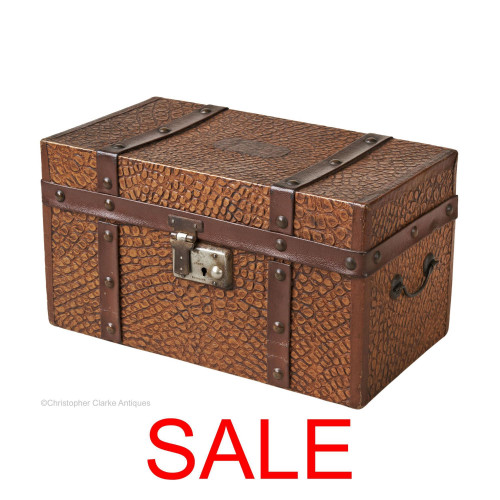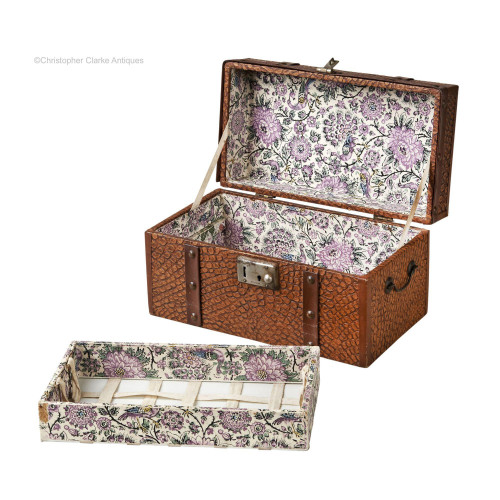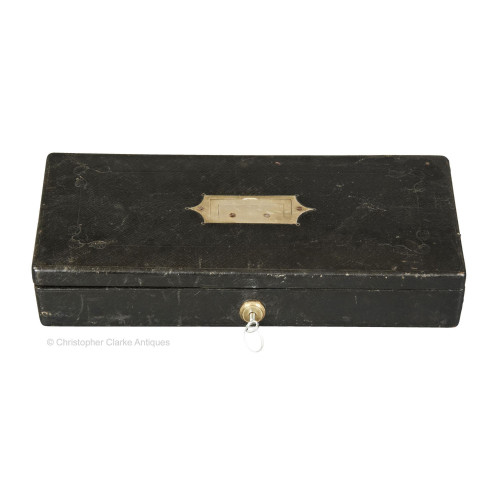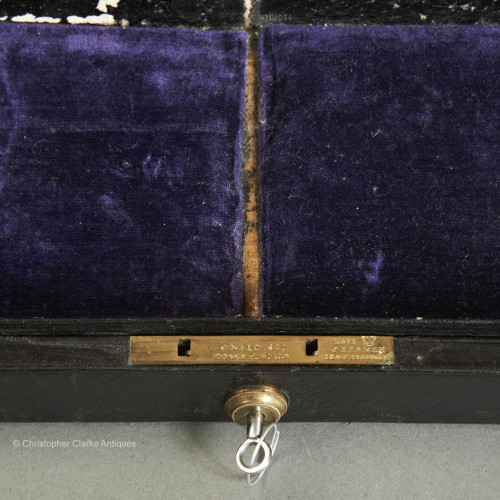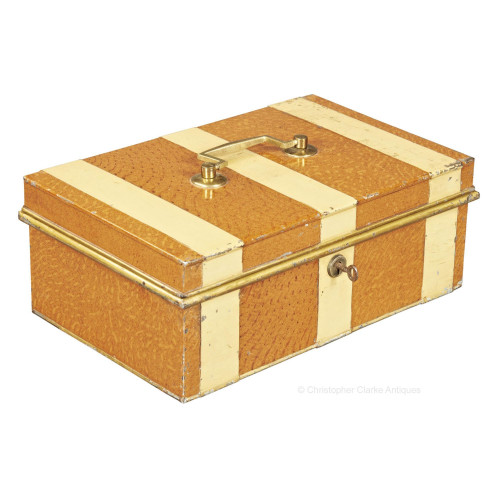Jack in the Box Writing Slope
Jack in the Box Writing Slope
83179
A large Jack in the Box Writing Slope or Portable Desk made from either Amboyna, Afzelia burl or a similar exotic wood.
The design copies that of an English Kingwood box we have previously had which can be seen in our archive and on our You Tube channel. However, the box was probably made by a Chinese hand in one of the many Asian ports they were located in.
When the fall of the box is opened, the Jack in the Box to the top of the box can be lifted up. First though, the top board of the slope has to be lifted to gain access to the top drawers of the Jack in the Box. Removing the two top drawers allows you to slide back the locking bar to each side hidden in the recess. The facia board in front of the drawers is worn (or intentionally shaped) where they have been pulled in and out with the Jack in the Box down. The bottom two drawers also have sliding bars to hold the Jack in the Box in the up position when lifted. The main method for holding the Jack in the Box up though is the wedge to each side. They have a rebate to the bottom so when the Jack is lifted, they pop out to hold the position. Unlike an English box, these wedges are loose and so have a tendency to fall out if lifted too quickly.
The fronts of the short drawers and the cupboard door are made of solid satin wood. The door is inlaid with decorative stringing and a burl oval that was purchased premade probably from Britain. As there is no space for drawer handles they have a simple faded pink ribbon; a method known to have been used by Chinese cabinet makers. To the side of the box is a plain full length drawer. It has no handle but is fitted with a sprung bar to its back board so that it pops out once the brass pin that retains it is removed.
The underside of the top of the Jack in the Box has been cut with V grooves as if to take dividers. Either the decision was changed part way through manufacture to go from pigeon holes to drawers or the wood was repurposed. These inverted Vs can just be seen from the back when the Jack is up.
The box is made of solid timber as opposed to veneers which is another indicator that it is not British made. The secondary woods are from the mahogany family. The strap work used to reinforce the joints and offer some protection to the corners etc. is a white metal. It is unmarked but may be Paktong, nickel or silver. There is also a raised oval plaque to the top with worn, engraved initials that look to be GGK.
There are questions on this box as to where exactly it was made. It is probable that it is China Trade, made by a Chinese hand for a Westerner passing through one of the ports but we cannot be 100 percent sure. What is not in doubt though is that the burl wood used to make it is stunning and further lifted by the silver strap work. The box has the outer and the cupboard key. Early to mid 19th Century.
Closed size is given.
Dimensions:
Early to mid 19th Century
Amboyna or similar
Chinese Export
China Trade
Historic repair to front corner of the top of the Jack in the Box. Baize replaced.
RELATED ITEMS










